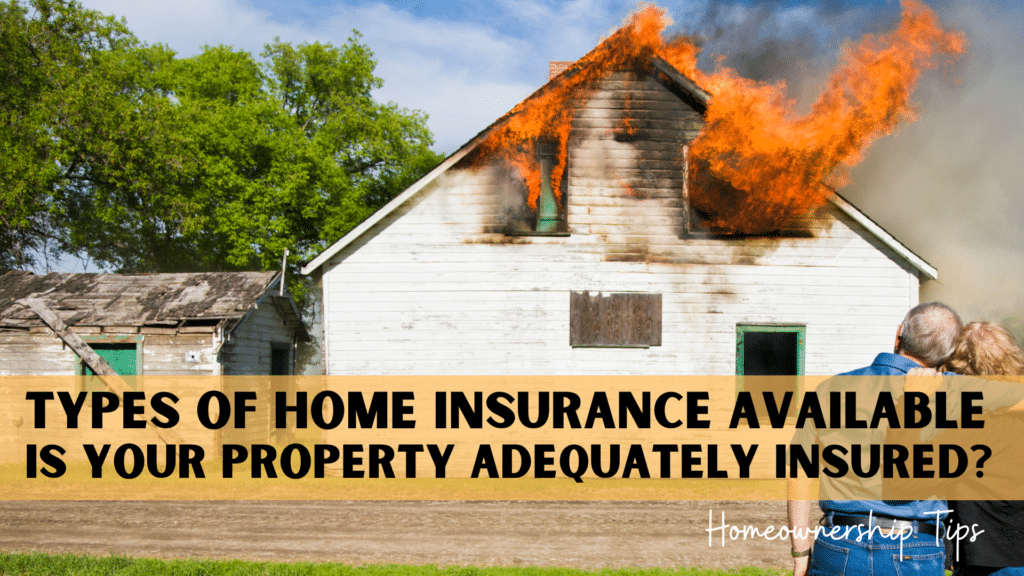
Home Insurance Policies Aren’t Created Equally
Understanding Home Insurance in Canada: Protecting Your Home Against Fire and Other Risks
Your home is probably your most significant asset. Whether you’re a first-time homebuyer or a seasoned homeowner, having the right home insurance policy is essential to protect this investment. Canada’s extreme weather and unforeseen accidents, such as fires, can create substantial financial challenges for homeowners. Fires, in particular, can be devastating—leaving you not only without a roof over your head but also facing the cost of rebuilding from scratch. So, what types of home insurance are available in Canada, and how can you make sure you’re fully protected if your home burns down and has to be rebuilt?
In this article, we’ll dive into the different types of home insurance policies available in Canada, what each one covers, and how to ensure you have the right coverage for fire damage and complete rebuild scenarios.
Types of Home Insurance in Canada
In Canada, home insurance policies are typically divided into four categories:
- Comprehensive (All-Risk) Insurance
- Basic or Named Perils Insurance
- Broad Insurance
- No-Frills Insurance
Each type of policy offers a different level of protection, and it’s crucial to understand the distinctions to make an informed decision.
1. Comprehensive (All-Risk) Insurance
Comprehensive insurance is the most robust and extensive home insurance policy you can purchase. It covers your home and its contents against all types of risks, except for the specific perils that are excluded. These exclusions often include things like flooding (in some areas), earthquakes, and wear and tear due to age.
Coverage:
- Building Coverage: Covers your home’s physical structure, including walls, roof, and foundation.
- Contents Coverage: Covers personal belongings such as furniture, electronics, and clothing.
- Liability Coverage: Protects you if someone is injured on your property and you are found legally responsible.
For homeowners concerned about fire damage, a comprehensive policy is often the best choice because it automatically includes fire as a covered peril. This means you are protected against accidental fire, lightning strikes, and even damage from a neighbouring fire.
However, note that some comprehensive policies might still exclude fires caused by specific activities, such as illegal drug labs or negligence, so you need to review your policy’s terms carefully.
2. Basic or Named Perils Insurance
Named perils insurance is a more limited type of coverage. It protects your home only against risks that are explicitly listed in the policy. This policy might appeal to homeowners who are looking to save on premiums, but it does come with more risks.
Coverage:
- The policyholder chooses the perils they want to be covered for. Typical perils include fire, theft, vandalism, and windstorms.
Since this type of insurance requires the perils to be named, fire must be specifically listed for coverage. If fire is excluded, you will not be covered in the event your home burns down. For this reason, named perils policies may not provide the same level of peace of mind that comprehensive policies do, especially when it comes to fire risks.
3. Broad Insurance
Broad insurance is a hybrid between comprehensive and basic insurance. It offers comprehensive coverage for your home’s structure but only named perils coverage for your belongings. It strikes a balance between cost and protection, making it an attractive option for many homeowners.
Coverage:
- Building Coverage: Similar to comprehensive insurance, it covers all risks for your home’s structure, including fire.
- Contents Coverage: Only covers named perils, meaning fire would need to be listed specifically as a covered peril to protect your belongings.
Broad insurance may be a good option for homeowners who want full protection for their home but are willing to take on slightly more risk when it comes to their personal property.
4. No-Frills Insurance
No-frills insurance is a bare-bones policy designed for homes that don’t meet the normal standards for insurance, perhaps because of structural issues or other concerns. These policies offer very limited coverage and are not typically recommended unless you have no other options.
Coverage:
- It offers minimal protection and does not typically cover fire damage or provide adequate protection for homeowners who need to rebuild after a disaster.
No-frills insurance is not suitable for those looking for comprehensive fire protection or rebuilding coverage.
Understanding Fire Coverage in Home Insurance
Fire damage is one of the most common and catastrophic risks that homeowners face. According to the Insurance Bureau of Canada, fire is a leading cause of insurance claims, especially in rural areas where fire services may take longer to respond. The good news is that most standard home insurance policies in Canada include coverage for fire damage. However, there are essential details to consider to ensure you’re adequately protected.
What Is Covered in the Event of a Fire?
If your home is destroyed by fire, a typical home insurance policy will cover:
- Rebuilding Costs: The cost to repair or rebuild your home to its pre-fire condition, including materials and labour.
- Contents Replacement: The cost to replace personal belongings that were lost or damaged in the fire.
- Additional Living Expenses: If you have to move out while your home is being repaired or rebuilt, your policy may cover living expenses such as hotel bills or rent.
Replacement Cost vs. Actual Cash Value
It’s important to understand the difference between “replacement cost” and “actual cash value” coverage.
- Replacement Cost: This means your insurer will cover the cost to replace your home and belongings without accounting for depreciation. For instance, if your 10-year-old roof burns down, your insurance will cover the cost of a brand-new roof of similar quality.
- Actual Cash Value: This coverage takes depreciation into account. If your roof is 10 years old, the insurer will pay out based on the roof’s depreciated value, which could be much less than the cost to replace it.
For full fire protection and rebuilding peace of mind, you should opt for a policy that offers replacement cost coverage. Otherwise, you may find yourself significantly out of pocket when it comes time to rebuild.
How to Ensure You’re Fully Protected If Your Home Burns Down
While basic fire protection is included in most home insurance policies, there are several steps you can take to ensure you’re fully protected and avoid costly gaps in coverage.
1. Choose a Comprehensive or Broad Policy
For the most peace of mind, comprehensive home insurance offers the best protection. It will cover fire damage for both your home’s structure and its contents. If you opt for broad coverage, ensure that fire is listed as a named peril for your belongings to avoid any surprises in case of a claim.
2. Select Replacement Cost Coverage
As discussed, actual cash value coverage may leave you with significant out-of-pocket expenses. Always opt for replacement cost coverage to ensure that you can rebuild your home without having to dip into savings.
3. Review Your Policy Limits
Most policies come with a limit on the amount the insurer will pay out in the event of a claim. Make sure that your coverage limits are sufficient to rebuild your home based on current construction costs. In the event of a fire, rebuilding costs may include higher material and labour expenses due to inflation or increased demand. Some insurers offer an “inflation guard” feature, which adjusts your coverage limits automatically to keep up with rising costs.
4. Consider Additional Coverage for High-Value Items
Standard home insurance policies often limit the amount they will pay for high-value items like jewellery, art, or electronics. If you have valuable items, consider adding a rider to your policy that provides full protection for these belongings in case they are lost in a fire.
5. Check for Exclusions
While fire is typically covered, there are some situations where your insurer may deny your claim. Fires caused by criminal activity, such as arson, or negligence may not be covered. Make sure you understand any exclusions in your policy, and take steps to reduce risks.
6. Invest in Fire Safety
While this isn’t an insurance tip per se, it’s important to invest in fire prevention measures such as installing smoke detectors, keeping a fire extinguisher handy, and maintaining your electrical systems. Not only do these steps help protect your home, but some insurers may offer discounts for having fire safety measures in place.
Conclusion
Fire is one of the most destructive forces that can impact a home, but with the right home insurance policy, you can protect yourself from the financial burden of rebuilding. In Canada, choosing between comprehensive, broad, or named perils insurance will depend on your specific needs and budget. For full fire protection, a comprehensive policy with replacement cost coverage is the best choice. Make sure to review your policy limits regularly, check for exclusions, and invest in fire safety measures to minimize risk.
By being proactive and carefully selecting the right policy, you can ensure that even if the unthinkable happens, you’ll be fully protected and able to rebuild your home without financial stress.
Resources:
For more great articles pertaining to homeownership, click here and read below:
- Seasonal Maintenance Tips For Homeowners
- Curb Appeal and Landscaping Ideas
- Home Safety Tips
If you’re thinking about buying, selling or investing in Durham Region or Toronto, let’s chat! I can be reached at 647-896.6584, by email at info@serenaholmesrealtor.com or by filling out this simple contact form. You can also kick off your search for Durham Region homes for sale by clicking here.
In addition, make sure we’re connected on social @serenaholmesrealtor and you’ve subscribed to my YouTube Channel. And, for other articles specific to real estate investing, click here.










